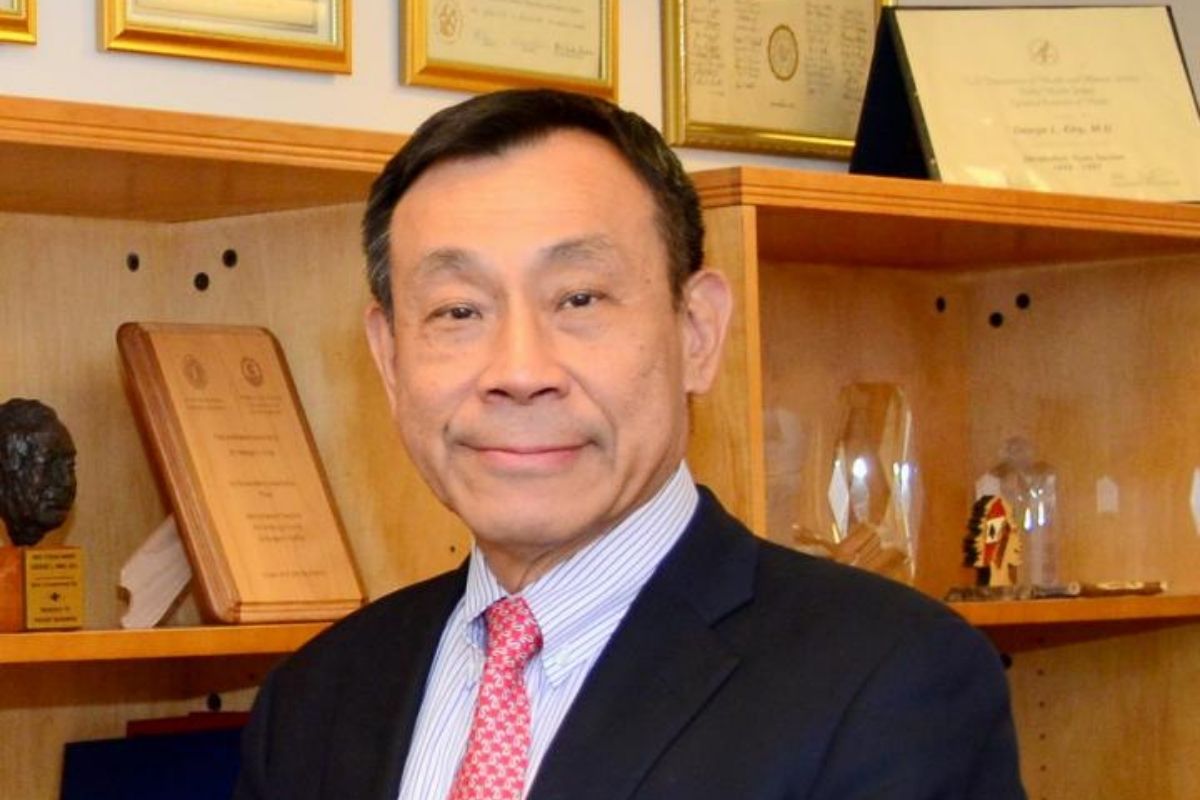
In honor of Asian American and Pacific Islander Heritage Month, I got the privilege of interviewing George King, M.D., of the Joslin Diabetes Center, whose research is on diabetes complications. He has been funded by Breakthrough T1D since the beginning, when he was an early-career scientist starting to make his way to the top.
In 2005, with Breakthrough T1D support, he started the longitudinal component of the Joslin Medalist—people who have lived with type 1 diabetes (T1D) for 50+ years—program. Read below to find out more about his research and the scientist who is undertaking it.
Breakthrough T1D: Can you describe your research and what you’re trying to do?
Dr. King: We started our Medalist study about 15 years ago, because these wonderful people with type 1 diabetes are telling us all these incredible stories about what their disease was like in 1920s and 1930s, and what they did to overcome the illness.
We did an analysis of all the Medalists—which is about a thousand patients in our study—and in about 300, you could clearly measure insulin in their blood. That was a remarkable finding, and it was surprising to everybody in the research community.
Why is that so important? Since our publication, it has reignited a whole interest of treating or curing diabetes, not just by transplant, which previously thought would be the only way, but rejuvenating your own beta cells. Then that could be potentially be a new way of curing diabetes.
Breakthrough T1D: What are your other major accomplishments?
Dr. King: In 1994, our lab discovered that VEGF was the major risk factor for the most severe form of eye disease. Subsequently, multiple drug companies had developed a VEGF inhibitor to use as a treatment. Blindness went from 40% in the 1970s to 4% today. That’s a huge improvement.
Another thing I found from the Medalists was that over 35% do not have any sign of eye or kidney problems. We were able to determine some important factors that could be preventing them from developing eye disease and kidney disease, and now we’re working with pharmaceutical companies to develop these new treatments.
Breakthrough T1D: How did you get into type 1 diabetes research?
Dr. King: In the late 1970s, I was introduced at a meeting by the two founders of Breakthrough T1D: Lee Ducat and Carol Lurie, who were so passionate about juvenile diabetes. And they were excited about my research. I was very young, 29 or 30 years, just starting my career. I was so impressed by their efforts, and I got very excited about both type 1 and type 2 diabetes. I decided to focus on diabetic complications, because in the clinic I see the effect of diabetes causing so much suffering.
Breakthrough T1D: How has Breakthrough T1D funding impacted your work and the course of your research?
Dr. King: Breakthrough T1D does a lot of things that are incredibly important for type 1 diabetes. In the 1980s, when I first started my career, they were the first ones to support my work. Then, throughout the years, they also have provided seed money for many of the major projects I have started. For example, the Medalist study. You have to have had type 1 diabetes for 50+ years, so the average age was 60 to 80 years old. No one wanted to fund me. But Breakthrough T1D was one of the first to provide us with substantial support, until we finally showed the community that the Medalists are incredibly valuable for us to understand why people develop type 1 diabetes complications.
Breakthrough T1D: What is your connection to China?
Dr. King: My parents are from Taiwan and I was born in Taiwan. I came to the United States pretty young—about nine years old.
I’ve also founded the Asian American Diabetes Initiative 20 years ago because I noted that many of the community health centers, in Boston and elsewhere, the treatment for diabetes was not optimal. I was in a community health center, and they asked me to take a look at their patients and, in those, A1c levels were around 14-15 [mmol/L], which is terrible. Now, I’m the co-chair of AADI for Asian Americans, native Hawaiians, and Pacific Islanders, because the knowledge base about diabetes and Asian Americans was very, very low—not just in patients, but also in the providers.
In my laboratory, we also take many of the top students to be trained in diabetes, from China, Japan, Korea, Hong Kong, Singapore. When they go back, they are the pioneers of the diabetes field in their own country, as well.
Breakthrough T1D: What can Breakthrough T1D do?
Dr. King: It’s very, very important for organizations, such as the Breakthrough T1D, to help us advocate for minority groups for treatment of diabetes. I run an Asian clinic and we see a lot of people from underserved communities.
One thing we really want to push is that we cannot get devices. Devices cost a lot of money, and many of the people in these communities cannot afford it. On top of that is insulin. I try to give them free insulin, but from the co-pay and so forth, they would take my prescription for 3 months, but the money runs out after 2 months. Some of them start not taking insulin or rationing insulin for over 3 months, because they have to make 2 months due for 3 months. Not only do they not have devices, insulin has to be a rationed quite a bit, and their A1c is also pretty high.
They do get controlled when they are admitted into the hospital, but that’s little late, right?